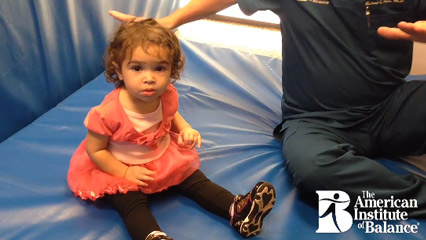
Balance Dysfunction in Children Secondary to Otitis Media with Effusion
Published on: April 25, 2014
Although there is not an abundance of literature on pediatric vestibular issues, otitis media with effusion (OME) has been reported in the literature as a cause of balance dysfunction in children. This may be further complicated by other co-morbidities, such as BPV of Infancy or in children with documented congenital sensorineural hearing loss secondary to syndromes and non-syndromes with vestibular expressivity.
CASE STUDY
18-month-old female, with chronic otitis media with effusion. Prior to placement of PE tubes the child had delayed vocalization and speech and language. The child’s balance was clearly disrupted to the family, and included staggering and falls. This was in stark contrast to the motor milestones of her older siblings.
Post- PE tubes- within 2 weeks (shown in video) of tube placement, child had increased vocalizations and balance had improved. The purpose of her examination was to evaluate age-appropriate motor-milestones. VEMPs were not obtainable due to the presence of PE tubes. As can be seen in the video, overall findings appeared within normal- with the recommendation for monitoring of balance function, increased safe-activities and VEMP testing when middle-ear function returned to normal.
PEARLS: OME may produce balance problems in children, which will recover, when the middle thick/heavy fluid is no longer pressing on the medial walls of the tympanum (which are also the lateral walls of the horizontal semicircular canals).
References:
1. Gans, RE, Evaluation and Management of Vestibular Function in Infants and Children with Hearing Loss, Madell JR and Flexer C (Eds.) 2014, Pediatric Audiology Diagnosis, Technology and Management, Thieme Medical Publishers, NY
2. Koyunchu M., Saka M., Tanyeri Y., et al. Effects of otitis media with effusion on the vestibular system in children, 1999 Otolaryngology- Head and Neck Surd; 120:117-21
3. National Institutes of Health website http://www.nidcd.nih.gov